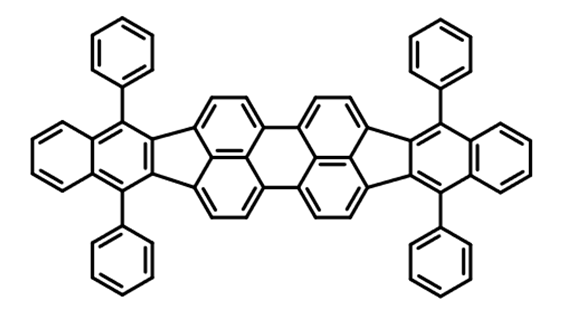Electroluminescence

Electroluminescence (EL) is the generation of light through the radiative recombination of holes and electrons which have been injected into the emissive material from cathode and anode contacts. Electroluminescent describes anything that can generate light in response to an electric current or field.
Dopant materials in electroluminescent devices enhance efficiency and control the color of the emitted light. Charge carriers (electrons/holes) are injected into the material due to an applied bias over the cathode and anode. These cathode and anodes are orientated opposite each other. When a hole and an electron recombine, the electron relaxes into the hole, resulting in the emission of a photon with an energy characteristic of the optical transition. It is this charge recombination that is fundamental to the process of electroluminescence in light emitting diodes (LEDs) and organic LEDs (OLEDs).
Electroluminescence is different from photoluminescence (PL) in which electrons are excited by incident photon absorption. The actual transition of an electron from a higher energy state to a lower energy state to emit a photon is identical in both electroluminescence and photoluminescence. However, the electric field applied for LED operation can cause a shift in the emission in electroluminescence. This shift in the emission from an applied electric field is called the Stark effect.
Applications of Electroluminescence
Electroluminescence is the generation of light through electrical operation. You can use this principle directly in electronic devices, whether it be for lighting or display purposes. There are two main types of light emitting devices which use electroluminescence. These are LEDs and OLEDs.
Electroluminescence in LEDS
LEDs are typically made from III-V inorganic semiconductors, for example Gallium arsenide (GaAs) and are grown atom-by-atom to form a uniform crystalline structure. The performance of your LED will depend on the quality of your layers. The choice and ratio of III-V inorganic semiconductors used in your LED will control the emission properties of the light.
Electroluminescence in OLEDs
OLEDs on the other hand are not deposited at this atomic level. Instead, the active area is made from dopant materials such organic small molecules and/or polymers that can be thermally evaporated or spin coated. The molecules do not have to be highly ordered like in LEDs and can be an amorphous film.
How to Measure Electroluminescence?
In order to measure electroluminescence, the active region needs to be excited by an external source, similar to with photoluminescence. For EL, you can do this by connecting a power supply over the device to apply a bias. This will drive charge injection into your device for radiative recombination and therefore electroluminescence will occur. To capture the emission, you can simply place a fiber optic in front of the active area of your device and then connect the other end of the fiber to an optical spectrometer. This will give you the intensity of the emission as a function of wavelength.
Efficiency
The intensity of the electroluminescence generated by a device is dependent on the current injection, as increasing the available charge carriers will enhance the rate of recombination. To achieve maximum efficiency, every electron that is injected should undergo radiative recombination. However, loss mechanisms can prevent this. Losses that occur during charge injection and recombination, such as triplet formation in OLEDs, are internal losses. Losses associated with the absorption of emitted light, by the substrate for example, are known as outcoupling losses.
The ratio of the number of photons emitted (Np) and electrons injected (Ne) in the recombination region is the internal electroluminescence quantum efficiency (ni):
This measurement gives you an idea of how efficient your emitting layer is at converting electrons into light.
The ratio of number of photons emitted (Np) and photons that exit the device (Nex) is the outcoupling efficiency (no).
This measurement will tell you if the layers surrounding your device are reducing the efficiency of the light escaping from the device.
The total external quantum efficiency (EQE) is a combination of both internal (ni) and outcoupling efficiencies (no):
EQE is a complete measurement of how efficiently your device converts electrons into light that can successfully leave the device.
Dopant Materials


